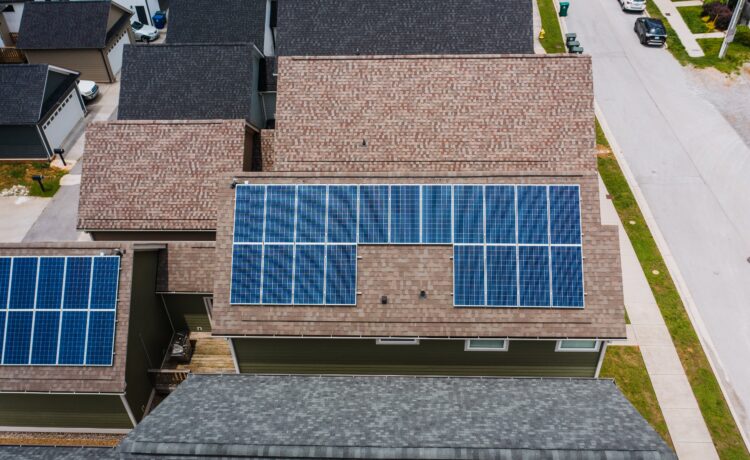Solar panels are currently one of the most popular and efficient ways to utilize solar power. They not only reduce our carbon footprint but also ensure we save up on energy bills. However, one unexpected risk that may put your solar investment in jeopardy is birds. Though they may seem harmless, the feathered creatures pose grave threat when near solar panels. This is where the bird proofing and netting come into action as a remedy in securing those high valued solar panels that are vulnerable to birds. This paper will discuss why bird proofing is an important aspect if solar energy conservation and how different methods of the installation netting could guarantee optimal results. Now, let us get into the details of how to secure your solar panels from these flying pests.
Birds as a Threat to Solar Panels.
Solar panel owners should be aware of the fact that birds are enemies to solar panels. Despite their innocent look, birds could cause significant amounts of harm to the delicate nature in which solar panels work.
One of common issues is bird excrements that deposit on the panel surface and influence its functionality. The corrosive nature of the bird droppings also causes a long-term damage to the protective coatings of the panel. In addition, if bird nests were located near or below the solar panels then there is a high probability of fire accidents occurring due to contact between nesting materials and electrical wiring.
Another problem is that birds can peck or scratch the surface of a solar panel in search of food, mating behavior. Apart from negatively affecting the appearance of this panel, these scratches cause functional damage by eliminating its capacity to absorb sunlight effectively.
Also, larger birds such as pigeons and seagulls may make the situation worse by their large numbers of flocking. More than that, they increase the chance of additional damages around solar installations in addition to attracting other sides like noise pollution and health problems caused by feathers or droppings.
To prevent such issues, it is very crucial for solar panel owners to use adequate bird proofing methods. This includes no spaces where the birds could have gotten underneath or between them through installing nets or mesh screens in all panel arrays.
All types of netting that may be used should definitely have been specially designed for this purpose, so they will not stop the penetration of sunlight while preventing birds from entering. Moreover, correct maintenance in cleaning up both sides of the netting is recommended as after some time accumulated dirt would affect the effectiveness.
Active prevention techniques for bird-proofing which includes the use of netting and routine maintenance examination will save your solar investment from deterioration.
Bird Proofing and Netting: A Type of Protection for Your Solar Investment.
Bird proofing and netting prevent damage to your solar investment. Birds come into this scenario as these flying agents pose significant threats to your solar panels by causing damages that are costly and occasionally rather time-consuming However, there are measures you can implement in order for such feathered intruders not damage the energy system.
The installation of these measures that prevent birds from landing and nesting on your solar panel is known as bird proofing. Potential solution is to mount spikes or wires on the edge of such panels. The physical barriers discourage birds from perching on the panels and deter them to nest in those areas.
Another common option is special solar panel pigeon proofing Sydney protection netting. The netting is a wall between the birds and panels; however, it provides free sunlight to all cells. It ensures that your solar panel remains effective, but it also keeps away unwanted birds.
Optimal performance of bird proofing can be achieved by correct installation and maintenance. In this case, all the edges of a panel array should be covered with spikes or wires adequately to ensure that there are no holes through which birds could fly in. Wires and nettings need regular inspections to identify possible damage or wear.
In the case where you intend to have a long-term investment, then bird proofing and netting is one wise decision that will safeguard your solar for good. All these measures will guarantee the continuity of energy generation without the fear that birds would land on your expensive property.
Bird Proofing and Netting Techniques.
Bird proofing and netting methods should also be applied to protect your solar panels from birds. Not only do these measures keep the birds away, but they also ensure that your solar investment remains intact and functioning as it should.
One of the most popular methods is bird spikes. These are made from quality materials like plastic or stainless steel so that birds do not perch on your panels. The spikes that are fitted along the edges of these panels can create an inhospitable environment for birds.
Another feasible substitute is the application of wire mesh netting. This also entails installing fine-mesh netting over the entire surfaces of your solar array, which allows light to pass while preventing birds from gaining access. This strategy, in turn, offers full protection against both nesting and perching.
In matters of visual discreetness, stealth netting could be the ideal solution. This netting blends seamlessly into the landscape, becoming almost invisible even in close observation. It is an excellent protection for all species of pest birds yet beautiful.
Bird deterrent systems that can be used in keeping the birds off from solar arrays. Such systems provide low-voltage shock every time a bird lands on them and are also sufficient since they teach the birds to never come back again.
Because while the needs of every property change, therefore it’s very important to consult with bird control professionals before picking a method most suitable for you.
Bird Proofing and Netting Installation & Maintenance Guidelines;
It is, therefore crucial that you take all the necessary steps to have bird proofing and netting put up for your solar panels so as to protect your investment.Here are some key steps to consider:
1. Assess Your Needs: Before you put any measures of bird-proofing in place, identify birds threats that are present around here. Identify the common species and where they live to determine appropriate solutions.
2. Choose Quality Materials: Choose high quality bird netting/mesh that has sufficient tensile strength to resist the force of birds while still permitting penetration of sunlight for highest possible efficacy. Choose materials that are durable, water resistant and specifically designed for solar panel protection.
3. Proper Installation: Put the bird-proofing steps in place as recommended by manufacturers or ask a professional proofers to do so. Cover the whole expanse of area to be protected with nets or meshes beneath which no bird can fly.
4. Regular Maintenance: Conducting normal inspection and maintenance over the installed bird proofing systems to ensure that they remain effective at all times. Clean away leaves or twigs, which can accumulate on nets and meshes as bird footholds.
5. Address Potential Entry Points: Birds are able to access panels through inventive entrances skylights, spaces between roof tiles and under eaves. Block these access points with suitable sealants or installation methods suggested by professionals.
6.Educate Yourself about Local Regulations: Before any installation, ensure you familiarize yourself with the laws that govern wildlife protection and conservation activities. Some regions might have specific rules regarding the ways an individual could protect their solar resources and local birdlife at once.
The fundamental activities into ensuring proper installation and appropriate maintenance standards of bird proofing and netting systems shall contribute largely to preventing losses as well as maximizing renewable reserves in solar energy.





